There might be no more important chore than taking time to clear out your garden in the fall.
As the temperatures turn a bit cooler and your vegetable plants begin to slowly fade, sometimes the garden takes a back seat to other chores. But it might be surprising to find out that working in your garden just a little now can pay off big next year.
Not only do your plants need to be cleared as they die off, you also need to get your garden soil ready for the next growing season too. But, there are a few things you should keep in mind when you clear out your garden this fall.
For most growing zones in the United States, your summer crops are starting to come to an end. Plants like cucumbers, tomatoes, peppers and corn have produced all they can for the season and are on their way out.
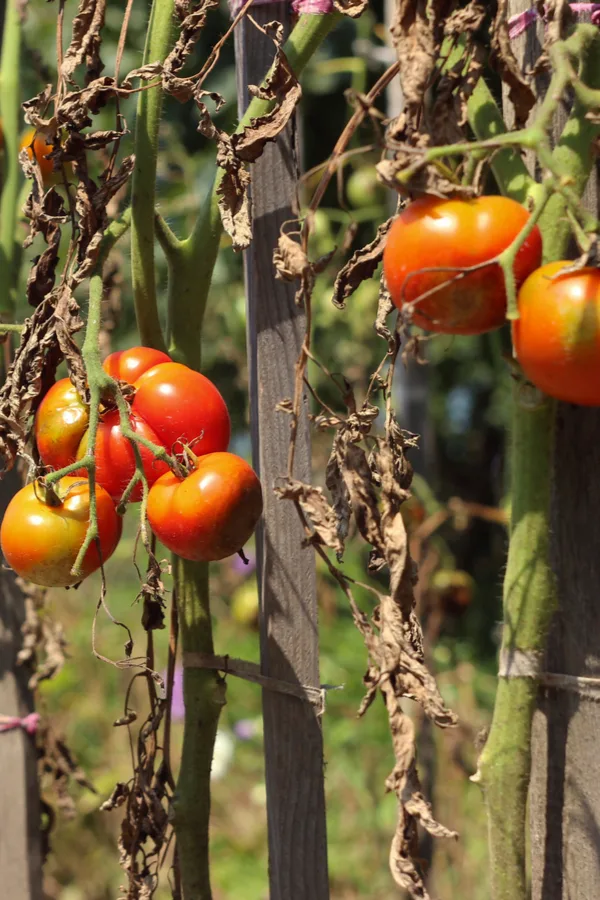
While you might be exhausted from all that summer weeding, picking, prepping, canning, and freezing, don’t give up on your garden chores just yet.
If you leave those decaying plants in your garden, you may wind up with major problems down the line. (And not just in terms of having a rough-looking garden!)
Those dying plants and any new weeds are still using up valuable nutrients in your garden’s soil. Nutrients that your plants will need when next spring arrives!
Why Should You Clear Out Your Garden In The Fall?
Keeping your dying plants in the garden is just asking for trouble. Not only are decaying plants the perfect location for insects that are looking for a warm place to overwinter, but they are also prime for diseases to appear. The longer those plants stay in the garden, the more chances those issues will occur.
In addition, all of the decaying fruit and vegetables left on your plants are chock full of seeds. You may end up with a host of unwanted volunteer plants in the spring if the seeds are left on the plants and then mixed into the soil when they fall to the ground.
When To Clear Plants Out
Some plants will need to be cleared out before others. Plants like tomatoes and cucumbers are not cold hardy and will get killed by the first cold spell.
Other plants, however, are a bit more cold hardy and can handle cooler temperatures. While cold spells may not completely kill the plants, it will slow down their growth substantially.
Plants like beets, carrots, pea, lettuce, chard, cauliflower, celery, and parsley can handle temperatures between 28-32º Fahrenheit (-2 to 0º Celcius).
Hardy vegetables like spinach, leeks, broccoli, mustard, radish, brussel sprouts, and turnips can handle below 28º Fahrenheit (-2º Celcius) temperatures.
However, don’t wait too long before clearing out the garden. While some of those plants may be able to handle cooler temperatures, you might want to clear them out sooner so you have enough time to plant a cover crop. (More on this later.)
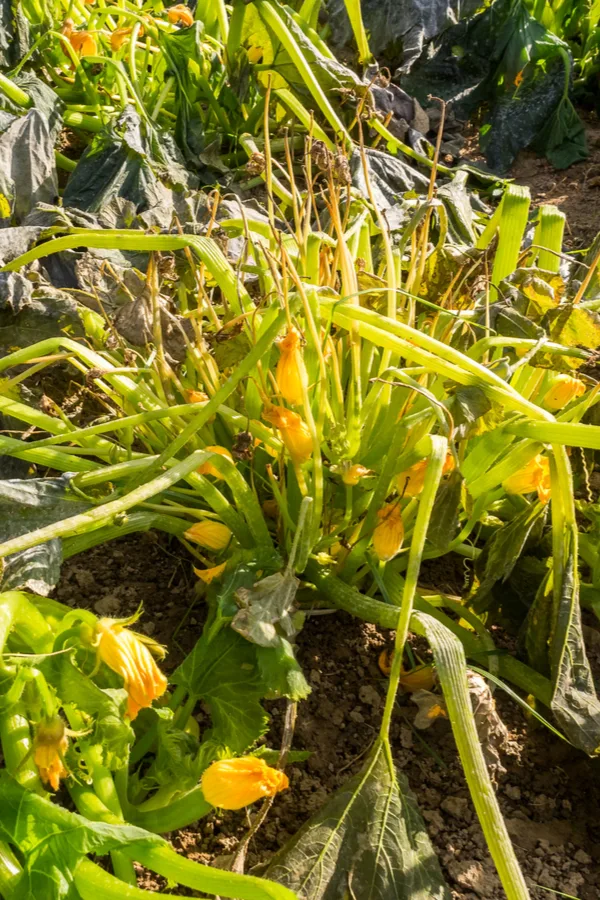
How To Clear Out The Garden & What To Do With The Plant Material
What’s The First Step?
One of the first things you should do before you clear out your garden in the fall is to take pictures and record your garden layout if you haven’t done so already. Keeping a garden journal is a great way to get insight into how your garden performs year after year.
It is also very important to know last year’s crop layout because you will need to rotate where your plants are placed each year.
Why? Because you can end up with higher chances of diseases and pests. Also, if you don’t change their location, the nutrients in the soil will also become depleted from the same plants growing in the space.
Now You’re Ready To Clear Out!
For most plants, you can go ahead and pull each one out. Just make sure to remove most roots in addition to any fruit or vegetables that have fallen onto the ground. Don’t forget to pull any weeds that have popped up as well.
Quick Tip: If you have hard soil like clay, water the garden a few hours before pulling. This will help to loosen the soil and make pulling weeds and vegetation easier.
You may choose to leave the roots of plants like beans and peas in if you prefer. They will help add additional nitrogen back into the soil. Simply chop those plants off at the base of the soil.
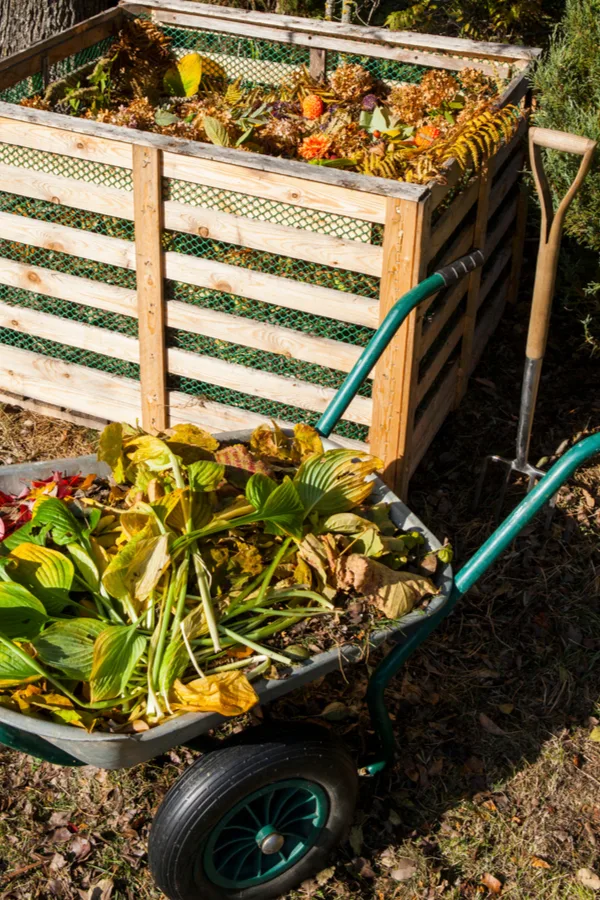
Composting “Rules” To Follow
The best place for most of the foliage that you pull is your compost pile. (You do have one right? If not, check out our article, “Learn How To Compost Like A Pro”. Prefer listening to a podcast? Check out our podcast on “How To Make Great Compost For A Great Garden”.)
Making your own compost is one of the best things you can do for your garden soil. However, there are a few “rules” that you should follow. These rules make sure you aren’t introducing more issues back into your garden when you go to use that compost.
What You Can Compost
The foliage from most of your flowers and vegetable plants are perfect to add to your home compost pile. Plants like zucchini, cucumbers, peas, beans, kale, corn, lettuce, broccoli, and so much more are perfect for compost piles.
However, you should only compost their roots, stems, and their foliage. The fruit and vegetables themselves should be removed. The reason is that the typical home compost pile can’t get hot enough to kill any seeds from those items. Once you add that compost to your garden, you will likely end up with multiple unwanted volunteer plants.
Just make sure to pick off those seed-filled items before adding the remaining foliage to your compost pile. For larger fruits like pumpkins, watermelon, and squash, just remove the seeds before adding the rinds to the pile.
Quick Tip: It might be helpful to run the pile of stalks and foliage over with your lawn mower. This will help cut the items into smaller pieces. Those smaller pieces are able to break down in your compost pile easier and quicker.
What About Weeds?
As mentioned before, when you clear out your garden in the fall, you can also remove any weeds as well as the crops. Most weeds that you pull from your garden can also be added to your compost pile. They contain just as many nutrients as most of your vegetables and flowers.
In addition, if the weeds are still green, they will help to heat up your compost pile quicker. Just make sure to remove any seed heads first.
There are a few weeds you will want to toss aside rather than add to your compost pile. Weeds that use their root systems to regenerate are better left out. This includes weeds like Canadian Thistle and Bermuda grass. They tend to regenerate into even more weeds when they are in a compost pile.
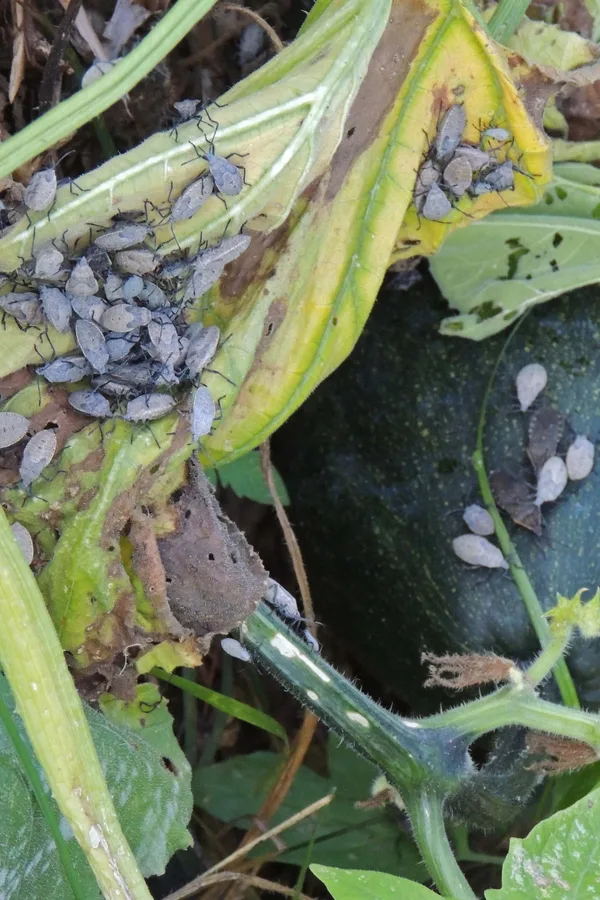
What Not To Compost When You Clear Out The Garden In The Fall
In addition to those few weeds and the seeds, you never want to add any material that appears diseased or sick. Also, keep plants that have an insect infestation like squash bugs, aphids, or other insects out of the compost pile as well. Most insects (and their eggs) can thrive in a home compost pile, even throughout the cold winter months.
There are also a few vegetable plants you should leave out of your compost pile as well. Tomato plants are one such vegetable that should not be included. They are very vulnerable to diseases, and those issues can be easily passed through your compost pile and into your garden next year.
Other plants that are members of the Nightshade family should also be left out of compost pile as well. This includes potatoes, eggplants, and pepper plants.
The best option for these plants is to either burn them or place them in yard waste bags for commercial composting. The key is to either make sure you destroy them completely or get them as far away from your garden as possible.
If you want even more information about why some plants should be left out of home compost piles, check out “What To Do With Tomato Plants When They Die“.
Additional Steps To Take When Clearing Out Your Garden
Cover That Bare Soil
Even though your garden space is nice and cleared out, you aren’t done quite yet. All of that bare soil is just asking to become weed-infested by the time spring rolls around.
As the wind blows, birds fly over, animals run by, etc., seeds are bound to end up on the bare garden soil. All of those seeds will then overwinter and start growing once the warmer spring weather arrives. Then, all of your hard work to clear out the garden in the fall will have been for nothing!
So, what can you do to prevent weeds from finding their home in your bare garden soil?
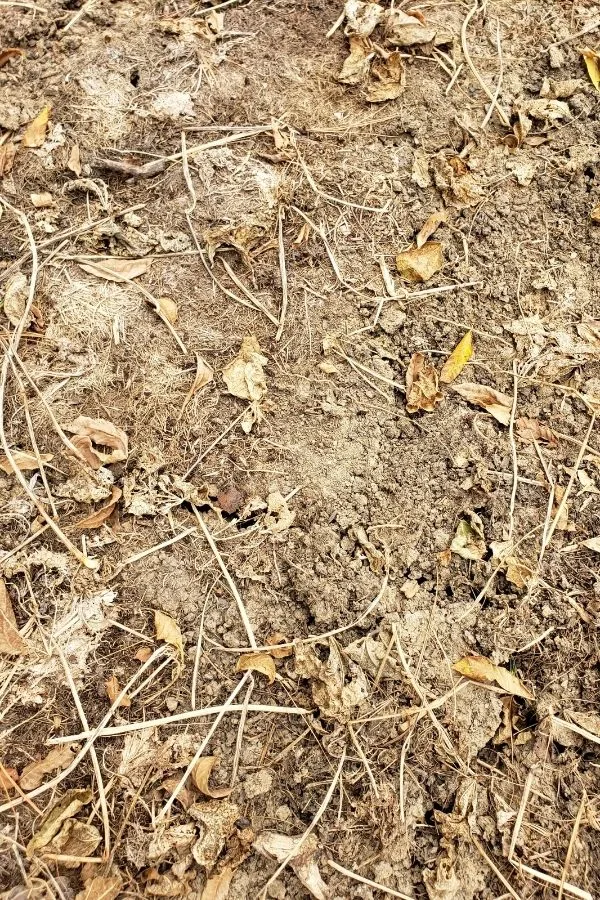
Plant A Cover Crop
One of the best things you can do is to plant a cover crop in your garden. Yes, it’s one more item to plant, but it’s easy to do and there is little to no maintenance once planted. And the benefits of planting cover crops are huge!
Keeping weeds from growing during the fall, winter, and early spring is just the first benefit. Cover crops also help to add nutrients back into the soil and their roots help to keep the soil loosened.
And, once they decompose, the cover crop helps the actual composition of the soil because all that organic matter becomes mixed in with the soil. Check out our article, “How To Grow A Fall Cover Crop” to learn even more.
Add Mulch
An alternative to planting a cover crop is to add mulch. Adding 3 to 6 inches of organic matter like shredded leaves or straw (without the seed heads) is a great way to snuff out weeds and prevent new ones from taking hold.
Once spring rolls around, you can simply plant through the organic cover crop.
Don’t Forget Your Perennials
Now that you have all of your annual plants and the weeds all removed from your garden, don’t forget to give your perennials a little fall maintenance as well.
Check out these two great articles on “When To Cut Back Perennials In The Fall” and “How To Divide Perennials” to get your returning plants on the right track for winter as well.
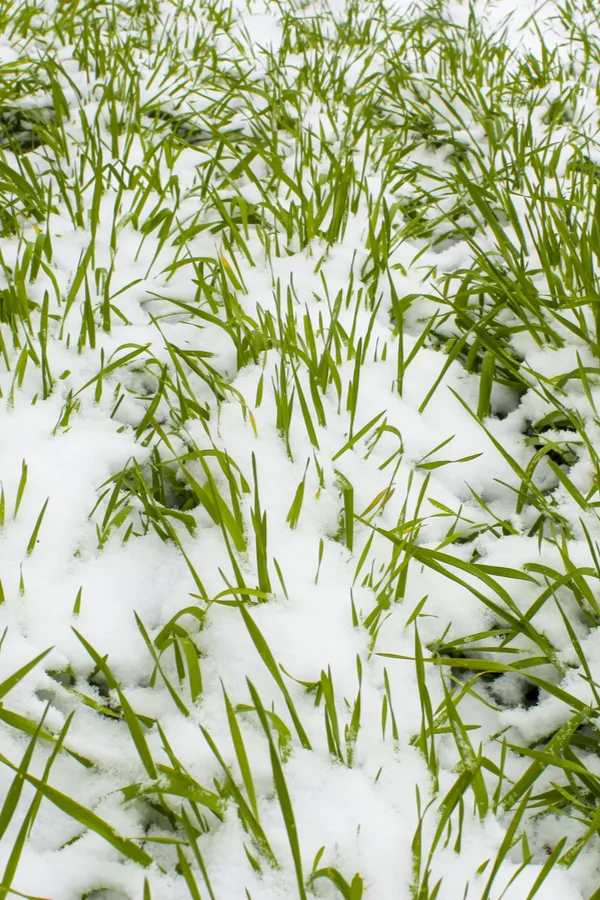
One Final Chore To Do Before Winter
The last thing you should do after you clean out your garden in the fall is to remove, clean, and store any of your garden supports, cages, trellises, and stakes. Repair any parts that are broken, wash and disinfect them, paint any items that might be looking like they’ve seen better days, and just perform general maintenance on the items.
Basically, get everything ready so that when spring does roll around, you’ll be ready to go!
To Conclude…
Now that your garden is officially through for the winter, you can sit back, relax, and start dreaming of your next amazing spring and summer garden!
